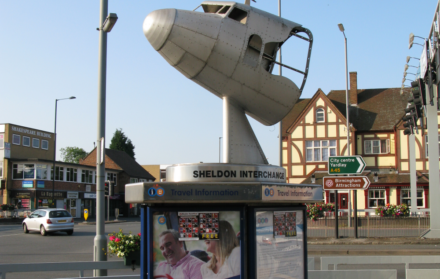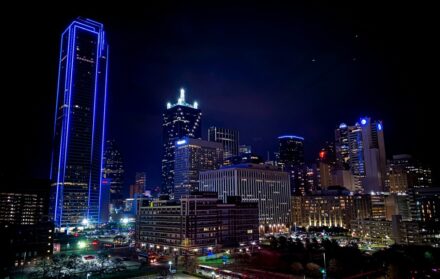
The Best Birmingham Attractions for Architecture Lovers
Embark on a journey through Birmingham’s architectural tapestry, where every structure tells a story of history, innovation, and artistic expression. In this guide, we delve into the best Birmingham attractions for architecture lovers, offering a curated selection of landmarks that define the city’s skyline.
From the grandeur of historic sites like Birmingham’s historic gems to the contemporary marvels shaping the city’s future, our exploration takes you through the architectural soul of Birmingham.
Step into the vibrant world of Birmingham’s arts scene, where creativity manifests in the form of architectural masterpieces. We navigate through attractions that stand at the intersection of art and architecture, providing a visual feast for enthusiasts.
For those who appreciate the interplay of light and structure, our guide showcases Birmingham attractions for photography lovers. Each click captures the essence of the city’s architectural diversity, offering endless possibilities for stunning shots.
As we unravel Birmingham’s architectural wonders, we invite you to explore beyond the facades. Dive into the Birmingham chocolate scene and coffee scene where architectural spaces become venues for indulgence, blending taste and design seamlessly.
From historic sites to contemporary art hubs, Birmingham caters to diverse interests. Discover attractions that cater to the cultural palate of art lovers, sports fans, and those seeking a tranquil retreat, such as destinations for a yoga retreat.
Nestled within the intricate tapestry of Birmingham’s architectural landscape, Sixes Birmingham stands out as a distinctive gem, weaving an unparalleled experience for enthusiasts. This avant-garde venue seamlessly integrates cutting-edge technology with contemporary design, presenting a harmonious fusion of innovation and aesthetic brilliance.
The architectural allure of Sixes Birmingham extends beyond its physical structure; it encapsulates a dynamic ambiance where the lines between tradition and modernity blur. As a beacon in the cityscape, Sixes Birmingham transforms the ordinary into the extraordinary, offering a pioneering architectural encounter that invites visitors to explore the future while respecting the past.
Whether you’re planning an office party, seeking the vibrant pulse of Birmingham nightlife, or aiming for family-friendly outings, our guide navigates the architectural landscape to cater to various preferences.
Join us in this architectural odyssey, where Birmingham’s structures transcend mere buildings, becoming storytellers of the city’s past, present, and future. This guide is your passport to the architectural heart of Birmingham, offering insights into the best attractions that leave an indelible mark on every architecture lover’s journey.
The Birmingham Library
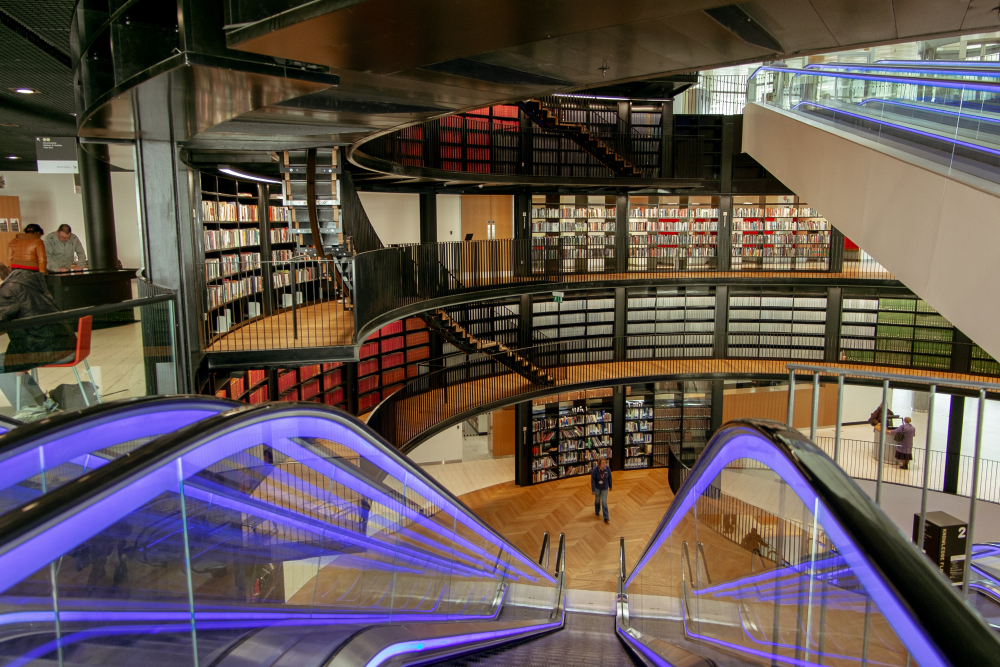
The Birmingham Library, a magnificent piece of architecture, stands tall in Birmingham. Its design and facilities make it a must-see for those who appreciate architecture. The library is not just a place for books, but also a centre of creativity and knowledge.
Visitors are welcomed by a spacious and well-lit atrium. The open layout encourages exploration inside.
The library offers a wide range of books in both print and digital formats, with over two million options to choose from. Interactive exhibitions and multimedia resources enhance the learning experience.
The standout feature is the rooftop garden, which provides a peaceful retreat with breathtaking views of Birmingham’s skyline.
The library hosts a variety of events and exhibitions, promoting creativity and ideas.
Whether you are an architecture enthusiast or eager to expand your knowledge, the Birmingham Library is an incredible destination. It combines design with a wealth of resources to offer a rewarding experience. Immerse yourself in the world of knowledge and explore the marvels of the Birmingham Library.
The Cube
Architect: Ken Shuttleworth
Year of Completion: 2010
Height: 150 metres
Floors: 25
Materials Used: Glass and steel
Design Concept: Modern, sleek, and futuristic
Function: Mixed-use development with offices, apartments, a hotel, restaurants, and a rooftop bar
Special Feature: Glass sky bar on the top floor with panoramic views of Birmingham
Notable Events: Hosted the BBC TV show “The Cube” in 2009
Interesting Fact: In 2012, a stuntman performed a tightrope walk between The Cube and the nearby Alpha Tower.
The Bullring
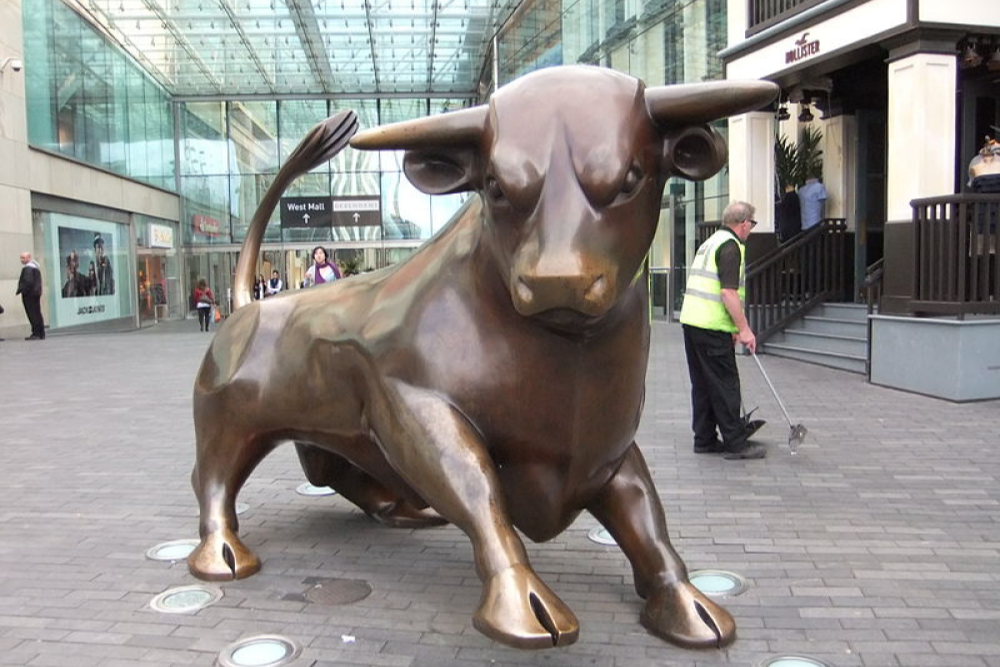
The Bullring in Birmingham is an impressive architectural marvel that combines modern and historic elements. Its unique metallic exterior and impressive glass windows represent Birmingham‘s transformation into a lively and contemporary city.
Discover the Bullring‘s diverse selection of shops, ranging from high-end fashion brands to well-known chain stores. Enjoy a variety of dining options for a quick snack or a leisurely meal.
The Bullring is immersed in history and is located in the heart of Birmingham, with a rich industrial heritage. In the 19th century, the Bull Ring area was a bustling market. Over time, it transformed into the thriving shopping destination we see today.
Visiting the Bullring allows you to appreciate its impressive architecture and catch a glimpse of the city’s past. Wander through its corridors and imagine the busy market that once existed in this space.
The Bullring showcases Birmingham‘s commitment to preserving history while embracing modernity. Explore this architectural gem and be captivated by its stunning design and vibrant atmosphere.
St. Philip’s Cathedral
St. Philip’s Cathedral is a magnificent architectural treasure located in Birmingham. It features stunning Georgian architecture, influenced by the architect Thomas Archer. The cathedral’s distinctive dome and spires make it a prominent landmark.
The construction began in 1711 and was completed in 1725, making it one of the oldest cathedrals in England. The interior showcases intricate woodwork, stained glass windows, and elaborate stone carvings. Visitors have the opportunity to explore the nave, chapels, and memorials dedicated to distinguished individuals.
St. Philip’s Cathedral has a rich musical heritage, renowned for its exceptional choir, regular choral performances, and organ recitals. It houses one of the largest organs in the United Kingdom, boasting 8,000 pipes and 139 stops, which creates a captivating atmosphere during performances.
Selfridges Building
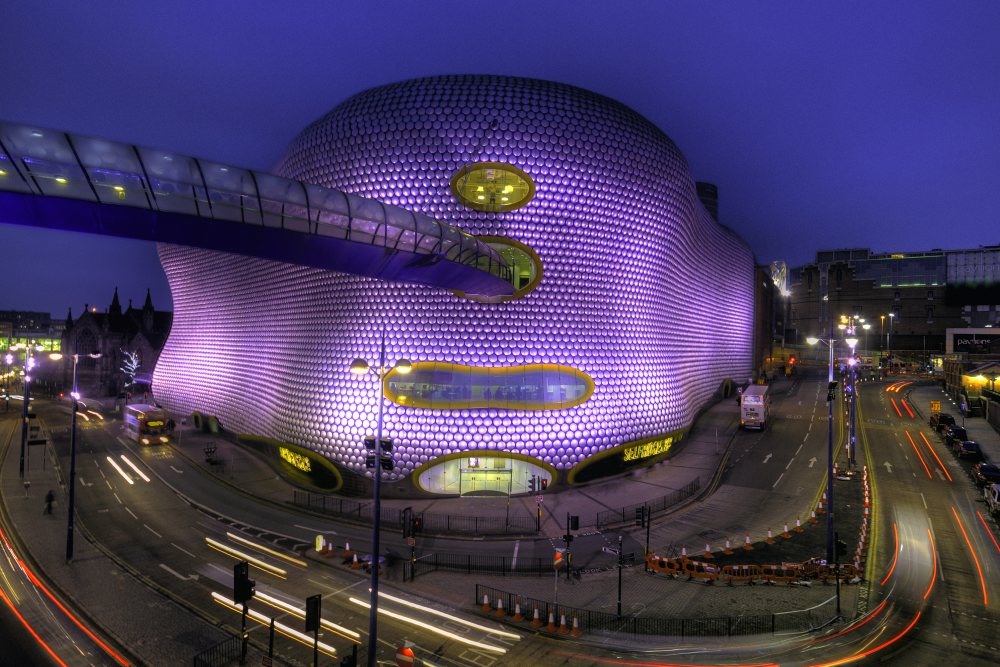
The Selfridges Building in Birmingham is an iconic architectural masterpiece designed by Future Systems. Its unconventional and eye-catching design, adorned with a pattern of aluminium discs, stands out and reflects the modern and vibrant character of the city.
Not only is it visually stunning, but it has also been awarded the prestigious RIBA Award for Architecture. The building is home to a flagship Selfridges department store, offering a unique shopping experience with high-end fashion brands and luxury items.
It has become a cultural landmark and has contributed to the city’s identity.
One noteworthy feature of the Selfridges Building is how it has rejuvenated the surrounding area. The construction of the building has generated renewed interest and investment, leading to the emergence of new shops, cafes, and cultural spaces. Consequently, the neighborhood has become lively and thriving.
The Selfridges Building has played a vital role in transforming the area into a vibrant destination for both residents and visitors.
The Mailbox
The Mailbox is a well-known attraction in Birmingham, UK. It offers entertainment, shopping, and dining options.
The Mailbox has a sleek and modern design. It showcases contemporary architecture.
Visitors to The Mailbox can explore high-end retail stores. There are fashion boutiques, luxury homeware shops, and renowned designer brands.
For food lovers, there are various restaurants and cafes at The Mailbox. They serve diverse cuisines.
In addition to shopping and dining, The Mailbox is home to the Everyman Cinema. It offers a unique movie-watching experience.
The Mailbox is conveniently located in Birmingham city centre. It is easily accessible for locals and tourists.
Architecture enthusiasts will appreciate the attention to detail in the design. The use of glass and steel creates a striking visual impact.
The Mailbox has a vibrant atmosphere. It is a great place for shopping, dining, and cultural exploration.
Whether you’re into fashion, food, or stunning architecture, The Mailbox in Birmingham is a must-visit. It offers a unique and memorable experience.
Birmingham Town Hall
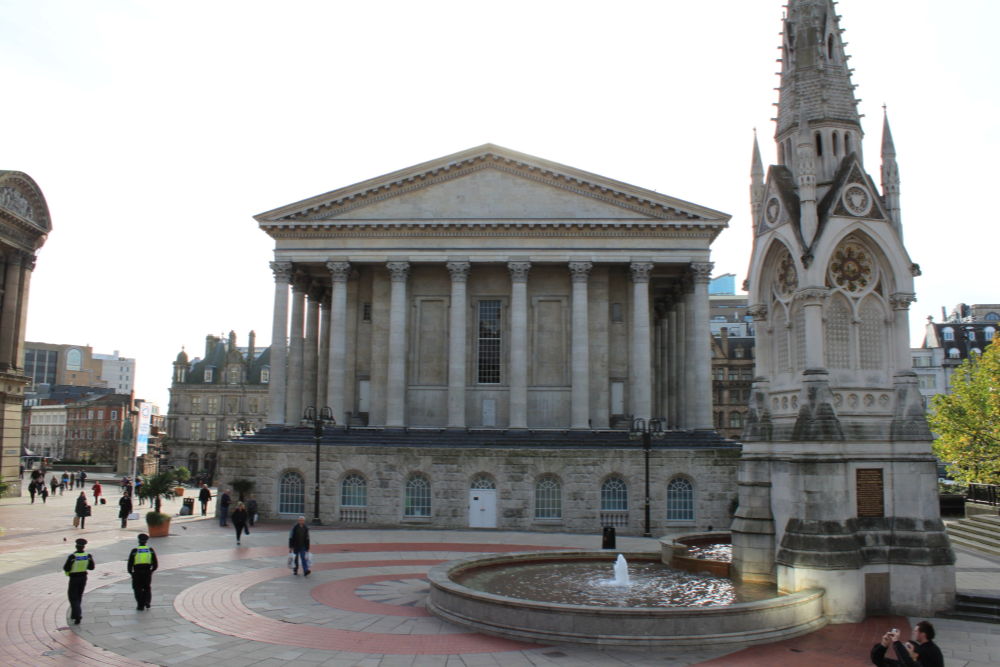
Birmingham Town Hall is an architectural treasure in Birmingham. It was designed by Joseph Aloysius Hansom and Edward Welch and built between 1832 and 1834, demonstrating the neoclassical style. The town hall features a splendid entrance with Corinthian columns and a striking central dome.
The interior of Birmingham Town Hall is equally awe-inspiring, decorated with intricate ornaments and elegant elements. The Great Hall, with its high ceilings and elaborate plasterwork, is particularly breathtaking. The hall is well-known for its exceptional acoustics, making it a sought-after venue for concerts and musical performances.
Visitors have the opportunity to learn about the history and importance of Birmingham Town Hall through guided tours. These tours provide insight into the construction of the building, its role in the city’s development, and significant events that have taken place there.
For architecture enthusiasts, Birmingham Town Hall offers a unique opportunity to admire and appreciate neoclassical design. Its grandeur and elegance are sure to leave a lasting impression.
While in Birmingham, architecture lovers may also want to explore other landmarks such as the Birmingham Museum and Art Gallery, the Library of Birmingham, and the Rotunda. These attractions showcase different architectural styles and contribute to a deeper understanding of the city’s architectural heritage.
Include Birmingham Town Hall in your itinerary and immerse yourself in the beauty and history of this remarkable masterpiece.
Aston Hall
Aston Hall is a Jacobean mansion in Birmingham, United Kingdom. It showcases the splendour of the Jacobean era and was built in the early 17th century for Sir Thomas Holte, a prosperous landowner.
The architecture of Aston Hall is awe-inspiring. Its symmetrical design, intricate stone carvings, and impressive turrets make it a sight to behold. The Hall features magnificent reception rooms, including the Great Hall, adorned with beautiful tapestries, elaborate ceilings, and a grand fireplace.
Visitors can explore the history of Aston Hall through guided tours. These tours provide insights into the lives of the Holte family and the significant events that took place within its walls. One notable event is the siege of 1643, during the English Civil War, when it was held by Royalist forces.
Aston Hall also hosts various events and exhibitions throughout the year, offering visitors an opportunity to immerse themselves in Birmingham’s cultural heritage. From art exhibitions to theatrical performances, there is always something captivating happening at Aston Hall.
Museum of the Jewellery Quarter
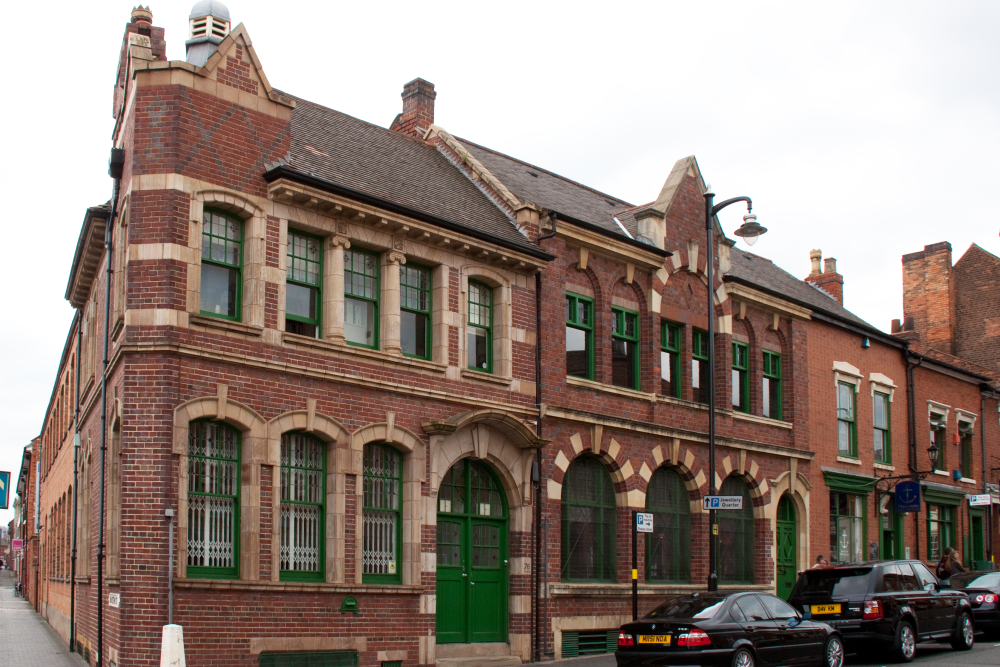
The Museum of the Jewellery Quarter in Birmingham, UK offers a glimpse into the city’s rich history of jewellery making. Here are some key features:
Interactive Exhibits: Visitors can learn about jewellery making through hands-on experiences, observing craftsmen at work and trying their hand at crafting their own pieces.
Historical Significance: Housed in a preserved jewellery factory from the early 20th century, the museum allows visitors to explore the techniques and processes used to create intricate jewellery pieces.
Showcasing Artistry: The museum displays a diverse range of jewellery, both contemporary and historical, highlighting the exquisite craftsmanship and creativity in each piece.
Guided Tours: Knowledgeable staff provide insights into the history, techniques, and stories behind the jewellery on display, offering a deeper understanding of the industry.
During my visit to the museum, I witnessed a skilled jeweller handcrafting a diamond ring. The precision and attention to detail were awe-inspiring as each small diamond was carefully set, creating a stunning piece of wearable art.
It was a captivating experience that gave me a greater appreciation for the skill behind each piece of jewellery. The museum provided a unique insight into the world of jewellery making and left me with a newfound admiration for the artistry involved.
Winterbourne House and Garden
Winterbourne House and Garden, in Birmingham, is a must-visit for enthusiasts of architecture. The design of the house and garden, following the Edwardian Arts and Crafts style, is truly remarkable. The property’s original beauty has been preserved and maintained through restoration efforts. The house showcases intricate woodwork, stained glass windows, and period furnishings.
The garden surrounding Winterbourne House is also quite impressive. It covers an area of seven acres and is home to over 6,000 plant species. Visitors can enjoy various themed gardens, including a rock garden, a woodland walk, and a Japanese-style garden. The garden is meticulously landscaped, providing a peaceful retreat.
Winterbourne House and Garden also offers educational programmes and events. Visitors have the opportunity to participate in workshops, attend lectures, and explore exhibitions that delve into the history and significance of the property. This allows visitors to deepen their knowledge and appreciation of the arts and crafts movement.
The attraction is open year-round, and the winter season offers a unique charm. The gardens transform into a winter wonderland with frost-covered plants and welcoming interiors. Visitors can experience the beauty of the architecture and the peacefulness of the garden in a serene winter setting.
Fact: Winterbourne House and Garden was constructed for John and Margaret Nettlefold in 1903 and was later entrusted to the University of Birmingham in 1944.
